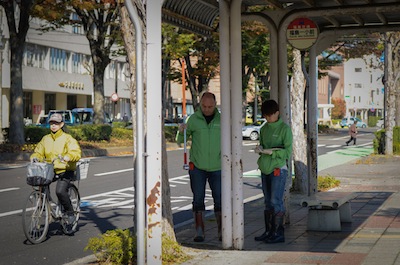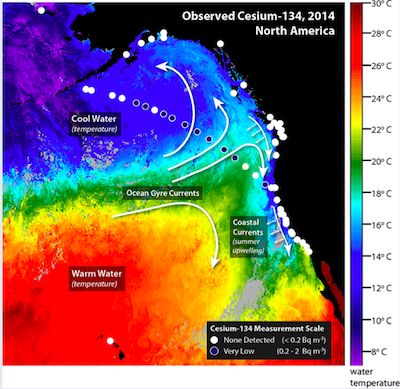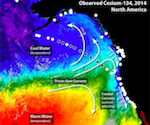Fukushima ‘Hot Spots’: Authorities Dilute Contamination Readings
Radioactive “hot spots” from the Fukushima Daiichi nuclear disaster may still pose a health threat to residents of Fukushima Prefecture in Japan, according to findings from a recent radiation monitoring survey conducted by Greenpeace in October, Aljazeera reported Nov. 13.

A Greenpeace radiation monitoring team checks contamination in Fukushima City. Photo by Noriko Hayashi / Greenpeace.
Hot spots, which exceed the Ministry of Environment’s long-term target of 0.23 microsieverts per hour, were discovered 60 kilometers from the disaster site and included roads within areas where evacuation advisories have been lifted.
In light of the findings, Greenpeace claims that authorities have underestimated the contamination and health risks for residents and will attempt to persuade local governments to cease lobbying efforts for the restart of nuclear reactors in their districts.
An article at the Fukuleaks website further describes the situation:
“The government has avoided dealing with the unsafe levels and hot spots by taking an average of multiple readings to declare a location ‘safe’. This same tactic is frequently used in contaminated food and radioactive water where the offending reading or item is diluted with other readings or items to make the offending item read under set safety levels. This tactic has also been used by UNSCEAR to declare the health damage from Fukushima Daiichi to be non existent by diluting those exposed into the entire population of Japan.”
Fukushima Radiation Detected Off California Coast
Water samples collected by a crowd-funded monitoring project have detected trace amounts of radioactivity from the Fukushima Daiichi nuclear disaster off the coast of Northern California, 100 miles west of Eureka, USA Today reported Nov. 14.
Small amounts of cesium-134, a radioactive isotope linked directly to the Fukushima fallout, were 1,000 times below the acceptable limit for drinking water set by the U.S. Environmental Protection Agency.

Satellite measurements of ocean temperature from July 28 to Aug. 4 and the direction of currents (white arrows) help show where radionuclides from Fukushima are transported. White circles indicate that no cesium-134 was detected. Blue circles indicate locations were low levels of cesium-134 were detected. Low levels of cesium-134 have been detected offshore, but not along the coast. Image by WHOI; more info here.
“The models predict cesium levels to increase over the next two to three years, but do a poor job describing how much more dilution will take place and where those waters will reach the shoreline first,” said Ken Buesseler, senior scientist and nuclear chemist at Woods Hole Oceanographic Institute.
Since there are no federal government agencies monitoring the radioactive fallout from Fukushima off the U.S. West Coast (surprise!), Buesseler started the crowd-funded project (called Our Radioactive Ocean) to collect samples along the west coast of North America. These findings reveal cesium-134 levels that are relatively low and considered harmless to humans and marine life, according to scientists.
Cesium-134 is a fingerprint of Fukushima since it does not occur naturally in nature and is produced only by nuclear weapons and reactors. Its half-life is about two years, which actually makes it less of a concern compared to cesium-137, which has been bio-accumulating for decades thanks to a half-life of 30 years. cesium-137 is plentiful in the ocean thanks to the Cold War’s nuclear weapons testing programs.
According Buesseler, cesium-134 does not bio-accumulate like other toxins. Due to its short half-life, the cesium-134 from nuclear weapons testing is no longer present — in other words, its presence off the coast of Northern California indicates it originated from Fukushima.

